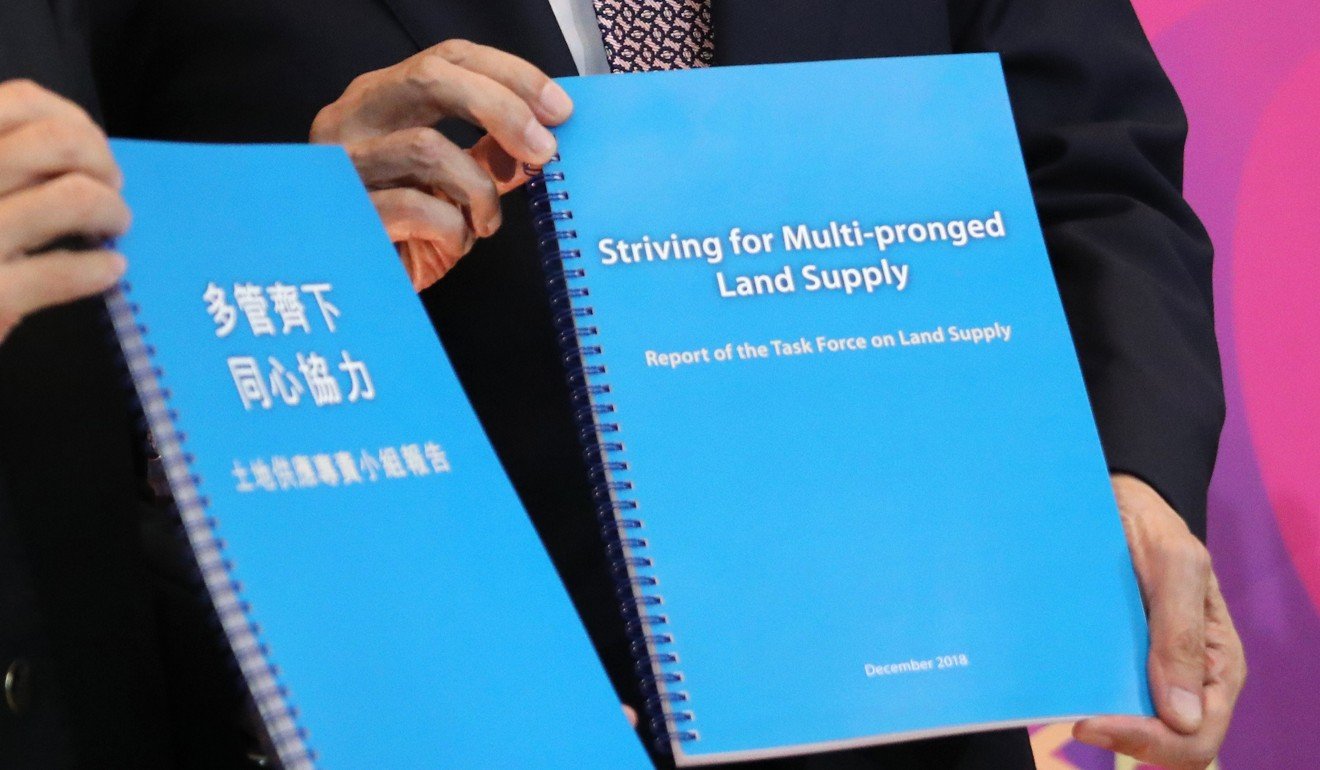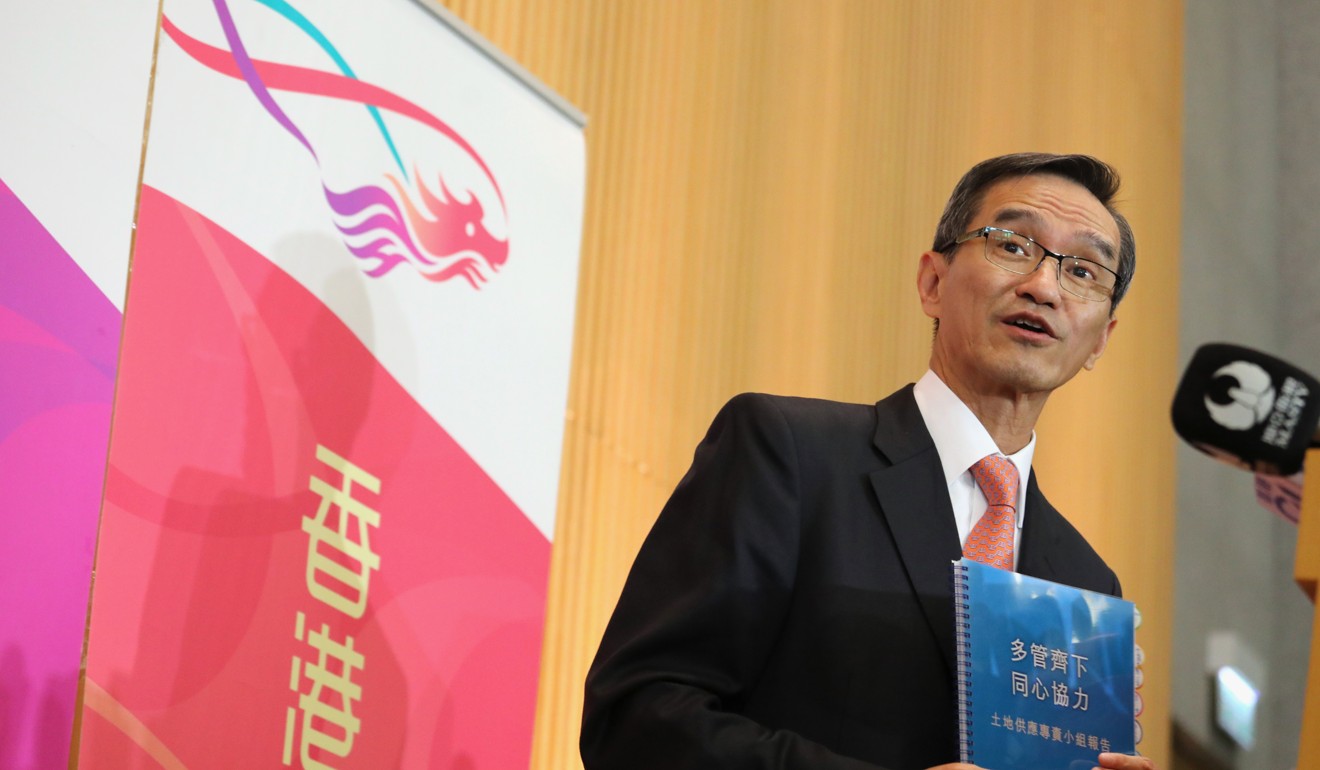
Hong Kong’s search for land: public opinion ‘misrepresented’ by official task force, NGO says
- Liber Research Community points to discrepancies where force appears to have left out opinions
- Task force chairman Stanley Wong defends report and says interest groups contributed significant number of opinions
The landmark report on how to source more land for space-starved Hong Kong has failed to accurately reflect public opinion, a land concern group claims.
A look into the final report by the government-appointed Task Force on Land Supply, released on Monday, as well as accompanying public opinion analysis, found discrepancies where the force appeared to have left out certain opinions that did not support its recommendations.
Concern groups said such discrepancies undermined the credibility of the report, which concluded a year-long exercise to collect public opinions on how to plug a predicted shortfall of 1,200 hectares of land for housing and economic development in the next 30 years.

“Some of the task force’s recommendations have deviated greatly from the collected views from the public,” said Chan Kim-ching, founder of land concern group Liber Research Community. “It is a pity that the report has failed to reflect public opinion faithfully.”
Eight land supply options were recommended in the report, including several controversial ones, such as building 1,000 hectares of islands to the east of Lantau Island, and a public-private partnership in developing some 1,000 hectares of farmland owned by big developers.
Those recommendations were reached after the force analysed a questionnaire survey, a phone survey, as well as written and verbal opinions collected through written submissions, public forums, and petitions and signature campaigns.
The east Lantau reclamation idea was backed by 62 per cent and 58 per cent of the public in the questionnaire and phone surveys respectively.
Task force cites public support for massive reclamation and use of agricultural sites
However, in the analysis of written and verbal opinions, conducted by the University of Hong Kong’s Social Sciences Research Centre to help the task force form its final report, only 7 per cent of some 69,000 comments on general attitude towards the reclamation were supportive of the option. An overwhelming 92 per cent were negative towards the option.
But, this was not reflected in the task force’s report.
Another example of this concerned the development of privately owned farmland, which received 68 per cent and 61 per cent of support in questionnaire and phone surveys.
However, the analysis of written and verbal views showed 2,900 comments in favour of developing such land through compulsory purchase by the government, while only 500 were in favour of the public-private partnership development model.
The task force’s report did not reflect this difference, only saying “quite a number of views” opposed the partnership model, which the force eventually recommended.

When asked about the accusations on a radio programme on Tuesday, Stanley Wong Yuen-fai, the task force chairman, said a significant number of written or verbal comments were submitted through signature campaigns, or open letters representing membership organisations, which would be hard to quantify.
“I understand some people have asked why, when there were so many [written and verbal] comments in number, we did not use them as one of the main considerations in reaching our recommendations,” Wong said.
“But many of those comments cannot simply be counted in numbers. For example, when a professional association submits a written opinion letter, how many counts of views should the submission represent?
“That’s why we always say that we can never quantify written or verbal submissions.”
He said many such comments regarding reclamation, or developing country parks, were collected through signature campaigns by environmental groups. Community organisations, chambers of commerce, and academies also submitted many written opinions, he said.
No shortage of difficulties in implementing task force’s preferred options
Wong said some written or verbal opinions did not clearly show whether commenters were 100 per cent for or against particular options, which added to the difficulty in quantifying those views.
Other recommended options include developing polluted farmland, known as brownfield sites, using areas of land temporarily leased to private recreational clubs, near-shore reclamation outside Victoria Harbour, developing caverns and underground space, resuming more land in the New Territories to build new towns, and developing the River Trade Terminal in Tuen Mun.
Together, the eight options could generate 3,250 hectares – 2.7 times more than the government’s predicted shortfall.
The task force has also been under attack for failing in its promise to set prioritise its recommendations. Critics say a lack of publicly mandated land supply priority was why the government had been in a stalemate in producing more land, with opposition from different sectors.
Wong said the city’s land shortage, especially in the short to medium term, had been severe.
“All the recommended options should start at the same time,” he said. “There is no spare time or space to set a priority among them.”

